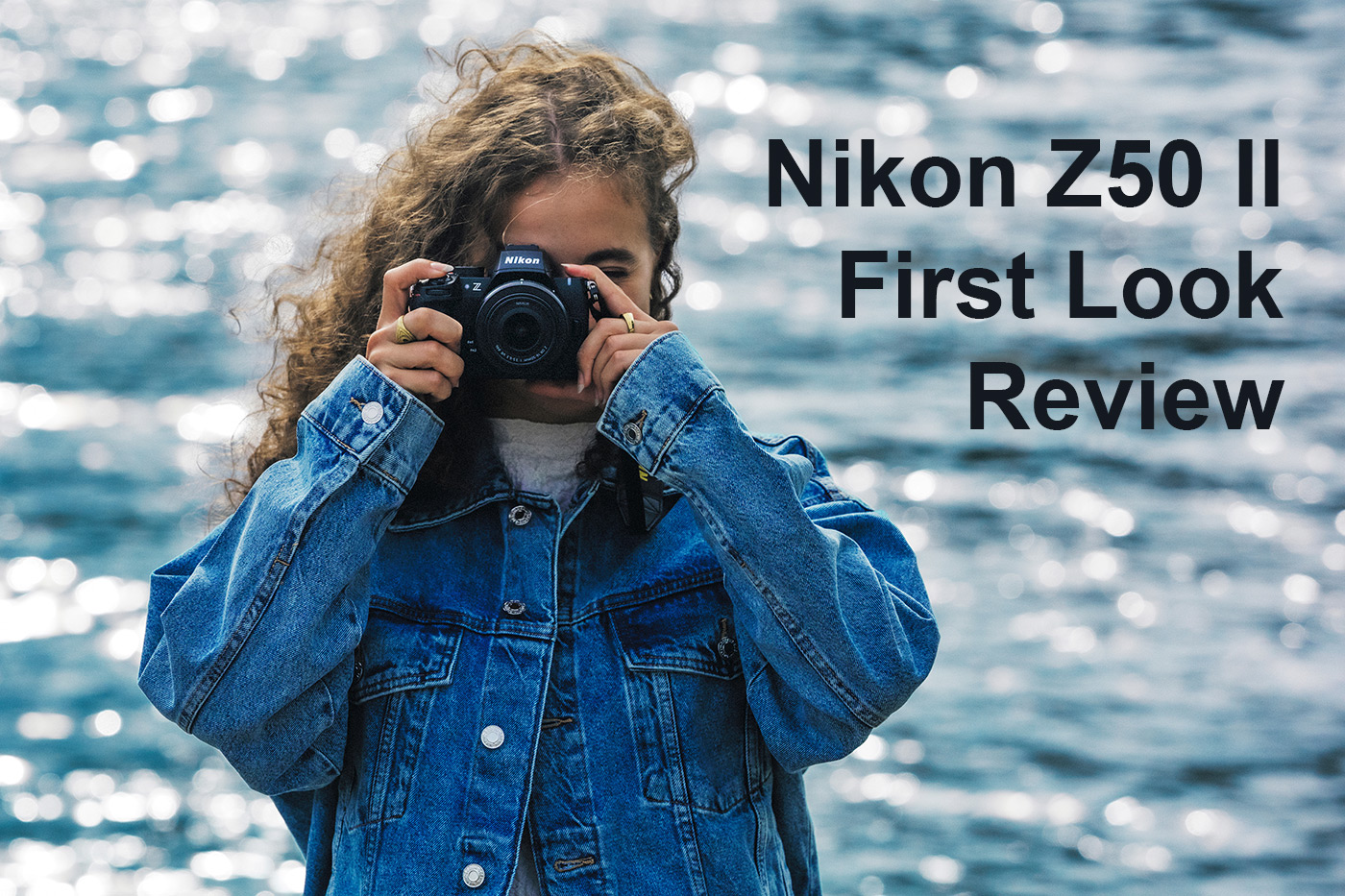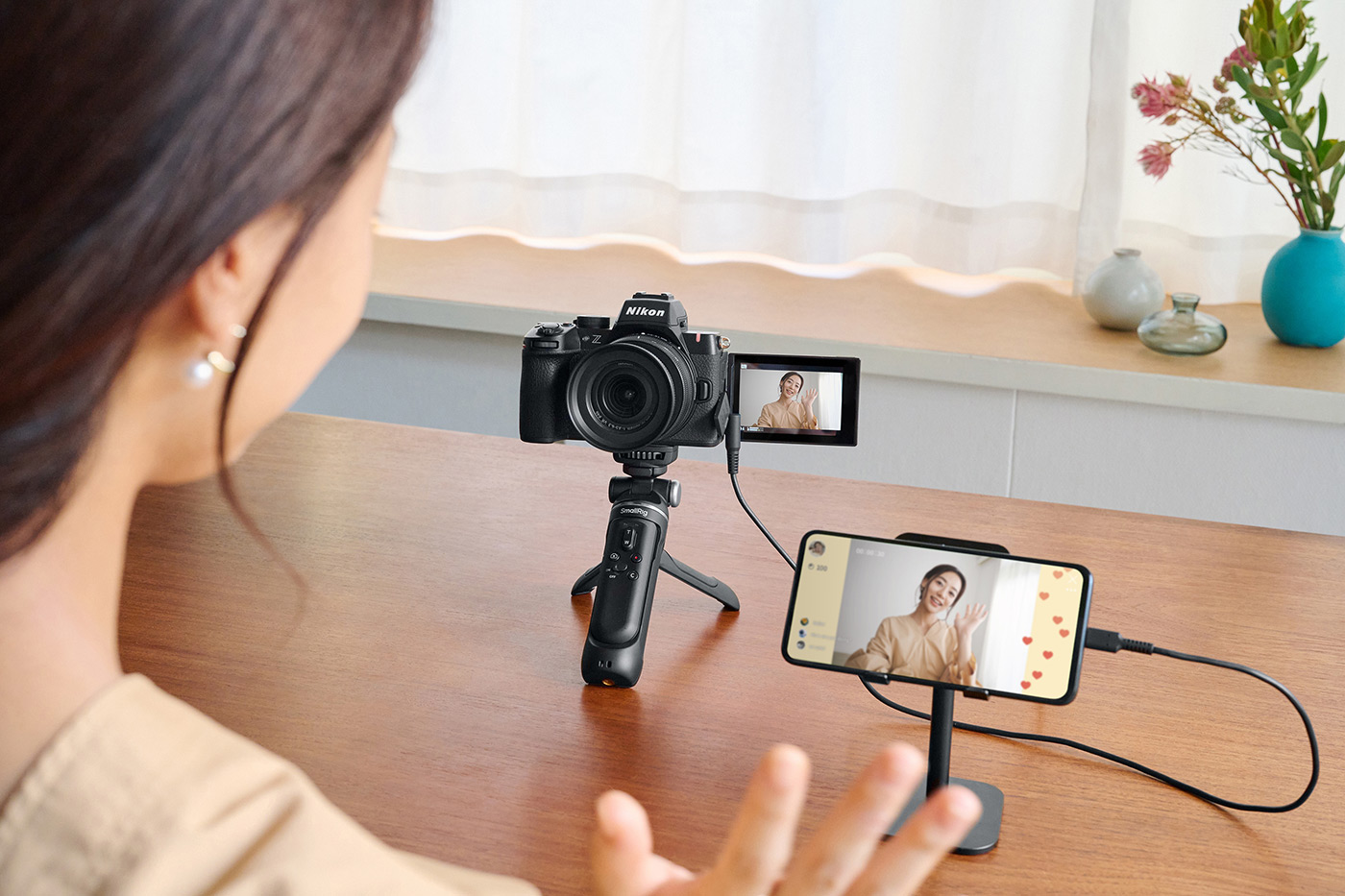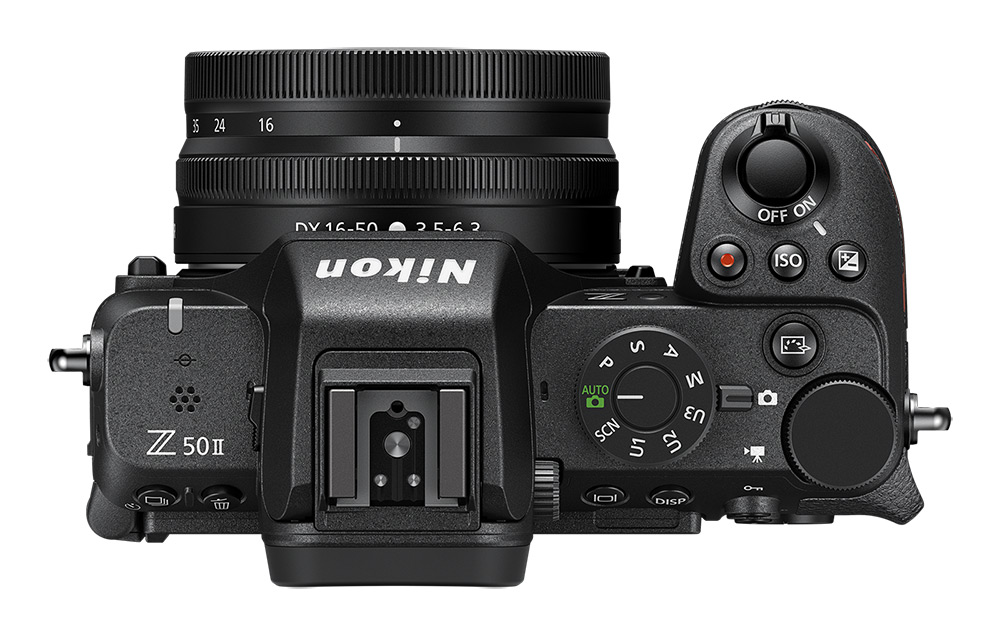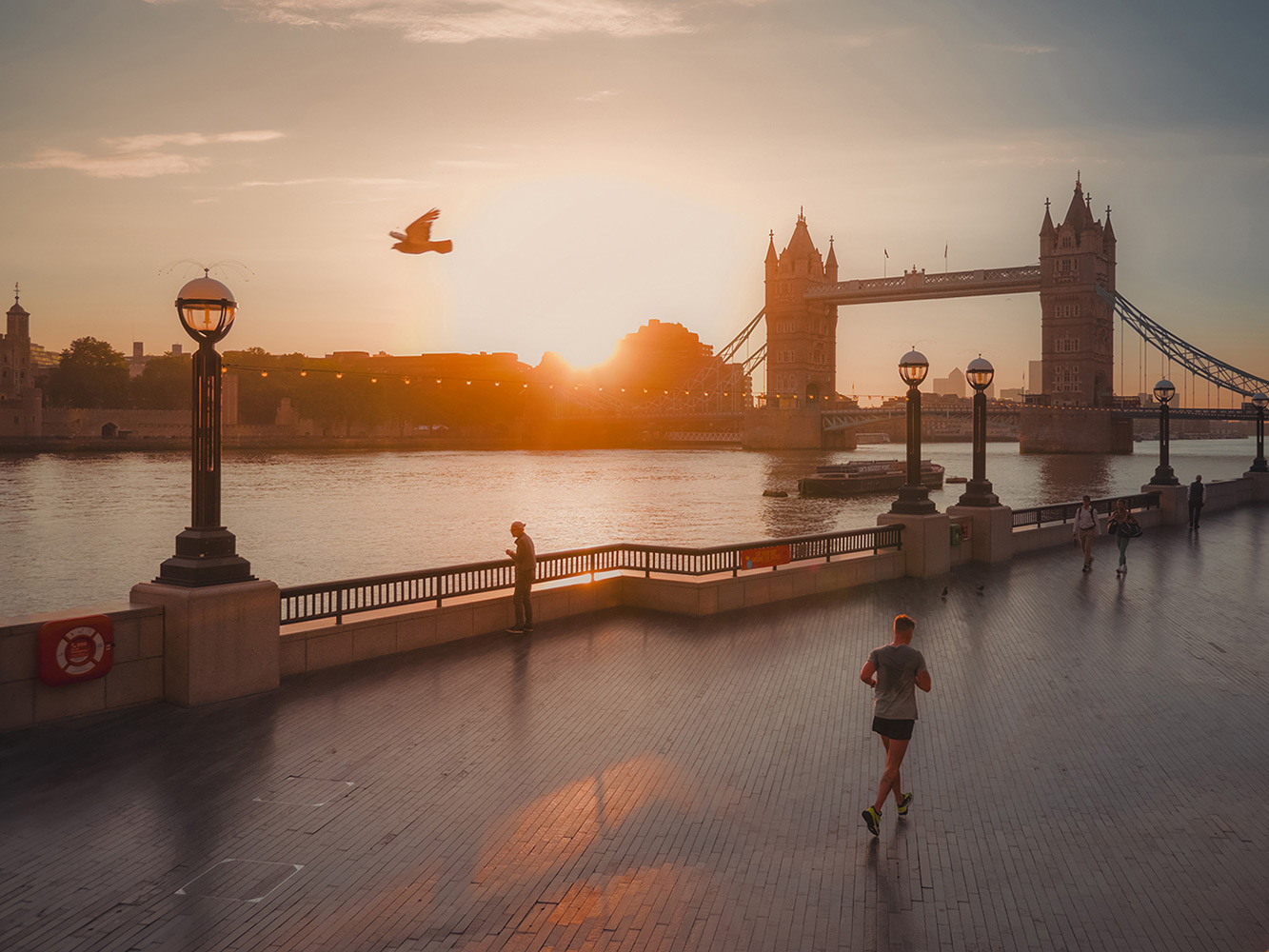- Call us: 01444 237070
- Contact Us
- Stores
- Sign In / Register
-
- Back
- Used Cameras
- Used Accessories
- Used Lenses
- Used Video
- Used Film Equipment
- Used Stock Alert
- Used Blank Test
- Sell or Part Exchange
- Used Clearance
- Recently Added Used Equipment
- Park Picks
- All Used Black Friday Deals
- Faulty
- Trade-In
- Blog
- New in
- Call us
- Contact us
- Stores
- Sign in
- Categories
- Tips & Inspiration
- Reviews
- News
- Events
- Features
- Buying Guides
- Competitions
Nikon Z50 II First Look Review
The next-generation Nikon Z50 II builds on the strengths of the original Z50 camera, which was Nikon’s first APS-C mirrorless model. With a 1.5x crop factor, referred to as ‘DX’ by Nikon, the Z50 line is popular among photographers and video creators who appreciate a smaller form factor with greater reach.
Our Nikon Z50 II first look review explores the key features of the updated model and includes a comparison table vs the original in order to help you decide whether this is the perfect hybrid system for your content creation.
With a 20.88-megapixel effective CMOS sensor and 4K video recording oversampled from 5.6K, along with upgraded streaming capabilities and much more, let’s dive in and discover what the updated Nikon Z camera has to offer.

When was the Nikon Z50 II released?
The Nikon Z50 II camera was released on November 7th, 2024, nearly five years after the original model. The body-only version is joined by two Nikon Z50 kits, catering to newcomers to the Z range as well as more seasoned mirrorless Z creators.
The Nikon Z50 II with 16-50mm Lens Kit includes a versatile wide-angle zoom, whereas the dual-lens Z50 II with 16-50mm and 50-250mm Lens Kit also includes a telephoto zoom, covering a full-frame equivalent focal length from 24mm to 375mm.
The price for each variant is:
- Z50II = £849.00
- Z50II + 16-50mm Kit = £999.00
- Z50II + 16-50mm + 50-250mm Kit = £1,199.00
These three options allow you to choose a system based on the type of content you create, and you can also select from a wide range of mirrorless Z mount lenses to suit your preferred niche. More on that later, next let’s explore the key features the camera body offers.

Z50 II key features
The original Z50 is a well-rounded camera aimed at beginners and enthusiasts who want a lightweight system capable of capturing high image quality. The second generation continues this trend, with several upgrades that take it to the next level. Key features include:
- Nikon DX-format CMOS sensor with 20.88 megapixels (effective pixel count)
- EXPEED 7 image processing engine
- Updated EVF with 1000 cd/m² brightness
- Larger 3.2-inch vari-angle touchscreen TFT monitor with vertical orientation
- Burst shooting up to 11 fps, plus new High-Speed Frame Capture+ and Pre-Release Capture
- Upgraded AF system with better subject coverage, newly added 3D tracking, and subject-tracking AF (similar to Z9)
- 4K/60p (cropped) video, oversampled 4K 30p from 5.6K, and 120p Full HD internal recording
- N-Log and HLG support, plus a new Product Review mode
- Newly added USB-C connectivity
- New remote cord/headphone jack
- New Nikon Imaging Cloud support with access to download creator image recipes
- Dedicated button for Picture Control presets
- Updated ergonomics with a new button layout, improved grip design, and new EVF design
Notably the EXPEED 7 is Nikon’s latest processor, delivering enhanced speed and performance overall, as well as access to the very latest AF system. If you capture any of the nine subjects including humans, select animals, and vehicles, this alone will be a major update compared to the original.

Picture control and Image Recipes
One of the most beneficial updates to the Z50 II is the ability to accurately preview how your photos and videos will look when applying a specific picture style. This functionality allows you to gauge the final result, and download pre-defined recipes (styles) from your favourite creators via the Nikon Imaging Cloud. Nikon has even added a dedicated button for Picture Control presets onto the body.
You can easily refine your most frequently used picture controls, streamlining the process of creating excellent-looking JPEGs straight out of the camera while ensuring a consistent look for your content.
Nikon cameras have a reputation for capturing beautiful and accurate results without the need for editing and this functionality allows you to extend this even further, while applying your own individuality to content.

Is the Z50 II good for video and vlogging?
Yes, the Z50 II offers several advantages for video content creators, including 4K/60p internal recording (with a crop) and 10-bit H.265 High Efficiency Video Coding, which provides a wider dynamic range thanks to the addition of N-Log and HLG support (HD video).
Additional features include an easily accessible Product Review mode that automatically switches focus between the product and the reviewer without the need to cover your face. Nikon has also added a headphone port for monitoring audio, which joins the HDMI port (Type D) and new USB Type-C connectivity.
For those who live-stream or attend online meetings, an updated USB streaming capability via a computer or smartphone allows for easy connectivity to popular social media platforms, including Twitch, YouTube Live, and many others.
Nikon has taken the original camera and upgraded all the essential video and vlogging features, helping creators elevate their content with an even more well-rounded offering.

What are the most notable photography features?
As a hybrid stills and video camera, the Z50 II is an excellent choice for photography. Not only can you apply picture styles as noted earlier, but the camera also offers outstanding ISO performance, a brighter EVF, new vertical orientation support from the monitor when shooting stills, and more.
With an ISO range of 100 to 51,200, the Z50 II delivers segment-leading capabilities, producing cleaner, more natural images in darker environments than its predecessor. There’s even a pop-up flash to supplement light during night shoots, and you can add a Nikon compatible flashgun for portable on and off-camera lighting.
Other updates for photographers include the addition of Pre-Release Capture, which allows for up to 1 second of image recording before fully pressing the shutter. This feature can help capture crucial moments during spontaneous, or fast-paced action, where you might otherwise miss the shot. This capability is available at full resolution for a maximum of 30fps (C30), making it ideal for situations such as birds taking off, bikes mid-jump, and other types of quick subjects.

Sample image 01 with Nikon Z DX 16-50mm @29mm. Camera settings: 1/125 seconds. f/8. ISO 200
Upgraded Autofocus (AF) capabilities
The updated AF system adds several significant benefits when shooting stills or videos. The Z50 II camera recognises more subjects (nine in total), which can now be accurately tracked around the frame, and it includes Nikon’s highly rated 3D tracking feature.
This allows you to focus more on composing your shot rather than concentrating on keeping the subject in focus, which is managed more effectively by the camera. The AF system picks up and tracks:
- People (eyes, face, head, upper body)
- Dogs
- Cats
- Birds
- Cars
- Motorcycles
- Bicycles
- Trains
- Airplanes

Sample image 2 no EXIF
Ergonomic and design updates
In addition to adding new features and updating hardware, Nikon has refined the design of the Z50 II to streamline the range and align it more closely with advanced models. These updates include:
- Addition of USB-C connectivity
- A brighter EVF with a refined form factor
- A larger LCD monitor with support for vertical orientation
- An updated button layout in keeping with other cameras from the Z range
- Dedicated button for Picture Control presets
- A refined grip for improved handling
These updates combine to create a more streamlined and improved shooting experience, offering easier framing, clearer previews, and better access to camera controls.

Sample image 03 with Nikon Z 40mm @40mm. Camera settings: 1/2000 seconds. f/2. ISO 1250
What is the same as the original Z50?
Although Nikon has updated the camera inside and out a number of features remain the same as the first generation. These include compatibility with the Nikon Z50 battery, allowing you to shoot with either the EN-EL25 or Nikon EN-EL25a. There’s still a single UHS-II compatible SD memory card slot, allowing you to keep using any existing cards.
Nikon has decided not to include in-body VR, which makes sense for such as compact body, instead leaving any vibration reduction to optically stabilised Z lenses.
Nikon Z50 vs Z50 II specs comparison
The table below highlights some of the key differences between these two cameras.
|
|
Z50 II (new) |
Z50 |
|
Lens mount |
Nikon Z mount |
Nikon Z mount |
|
Image sensor |
DX, CMOS, 23.5 mm x 15.7 mm |
DX, CMOS, 23.5 mm x 15.7 mm |
|
Effective pixels |
20.9 million |
20.9 million |
|
Processing engine |
EXPEED 7 |
EXPEED 6 |
|
Electronic Viewfinder (EVF) |
0.39-in. approx. 2360k-dot (XGA) OLED electronic viewfinder with brightness 1000 cd/m2 |
0.39-in. approx. 2360k-dot (XGA) OLED electronic viewfinder with brightness 500 cd/m2 |
|
Monitor |
3.2–in. Tilting TFT touch-sensitive LCD with Approx. 1040k-dot |
3.2–in. Tilting TFT touch-sensitive LCD with Approx. 1040k-dot |
|
Continuous shooting |
Up to 11 fps, High-speed Frame Capture+ (C15, C30), Pre-Release capture |
Up to 11 fps, High-speed continuous (extended): 11 fps |
|
Autofocus system |
Hybrid focal-plane phase-detection/contrast AF with subject detection for:
3D tracking, subject-tracking AF |
Hybrid phase-detection/contrast AF with AF assist and Eye-Detection AF for people, cat, dog |
|
Video recording |
4K/60p (crop), 30p, 25p, 24p, Full HD 120p, 100p, 60p, 50p, 30p, 25p, 24p, MOV (H.265 (8/10-bit), MP4 (H.264 AVC (8-bit), N-Log, HLG support, Hi-Res Zoom, Product Review Mode, self-timer |
4K UHD 30p, 25p, 24p, Full HD 120p, 100p, 60p, 50p, 30p, 25p, 24p, MOV, MP4 (H.264 AVC (8-bit) |
|
Audio |
Built-in stereo or external microphone with attenuator option; sensitivity adjustable. Linear PCM, AAC |
Built-in stereo or external microphone with attenuator option; sensitivity adjustable. Linear PCM, AAC |
|
Interface |
|
|
|
Weather sealing |
Yes |
Yes |
|
Media |
SD (UHS-II) x1 |
SD (UHS-II) x1 |
|
Battery |
One EN-EL25 rechargeable Li-ion battery |
One EN-EL25 rechargeable Li-ion battery |
|
Dimensions |
127 x 96.8 x 66.5mm |
126.5 x 93.5 x 60 mm |
|
Weight Approx. |
520g |
450g |
This table demonstrates how Nikon has designed a faster camera with improved autofocus, quicker burst shooting, updated ergonomics, new shooting features, and enhanced connectivity. All of these contribute to a body that is only 70g heavier and slightly larger, still falling within the highly portable category. By comparison, the popular full-frame Z8 weighs 910g and measures 144 x 118.5 x 83mm, which is substantially larger and heavier.

Sample image 04 No EXIF data
Z lenses and accessories
Alongside the two Z50 II lens kits, there is a vast range of mirrorless Z lenses available from both Nikon and third-party brands such as Sigma, Tamron, TTArtisan, Viltrox, and many more. This flexibility allows you to choose the best lens for the types of subjects you enjoy shooting while expanding your collection as your interests grow.
Additionally, there are countless accessories compatible with the Z50 II. These include the brand-new Nikon MC-DC3 Remote Release Cord, the Remote Grip MC-N10, and various video accessories, including LED lighting, microphones such as the Sennheiser MKE 200 and many more.
While the upgrades to the Nikon Z50 II may initially seem incremental, the addition of the EXPEED 7 processor alone represents a significant leap forward. This powerful engine not only enhances autofocus performance but also improves low-light capabilities and overall image quality, making it an excellent choice for photography and video content.
The camera also adds much more advanced autofocus with subject tracking, a brighter electronic viewfinder, and new shooting modes, catering better to the needs of hybrid creators. With its compact and lightweight DX format design, it is well-suited for newcomers to the Z series as well as seasoned Nikon users.
Reserve your Nikon Z50 II today and discover how this compact Z mount camera can transform how you create content, or browse our entire line of Nikon mirrorless cameras to compare how it fits into the range.
Share this post:
By Nick Dautlich on 07/11/2024
Nick Dautlich
Senior Content Writer and Product Reviewer
Nick Dautlich is the Senior Content Writer and Product Reviewer at Park Cameras, with over 15 years of photography experience. A Sony Imaging Professional and expert reviewer, Nick has worked with major brands such as Canon, Sony and Nikon. His work is also featured on Vanguard World UK’s website, Capture Landscapes, and Shutter Evolve. Nick’s photography includes National Trust projects and magazine covers and he is passionate about landscapes and storytelling. Nick also enjoys hiking and teaching his children about nature. Learn more on his profile page.

Trade in your old equipment
Fast and easy trade in service ensures your old gear is collected efficiently and you are paid quickly! It's very simple to trade in your unwanted photography gear. Just head over to our dedicated Sell or Part Exchange page, fill out the details, and we'll get back to you with an offer for your old gear. Take the cash, or put it towards the cost of your new gear. It's up to you! Find out more
sign up to the newsletter
Keep up to date on the latest photography news, events and offers. Sign up now
